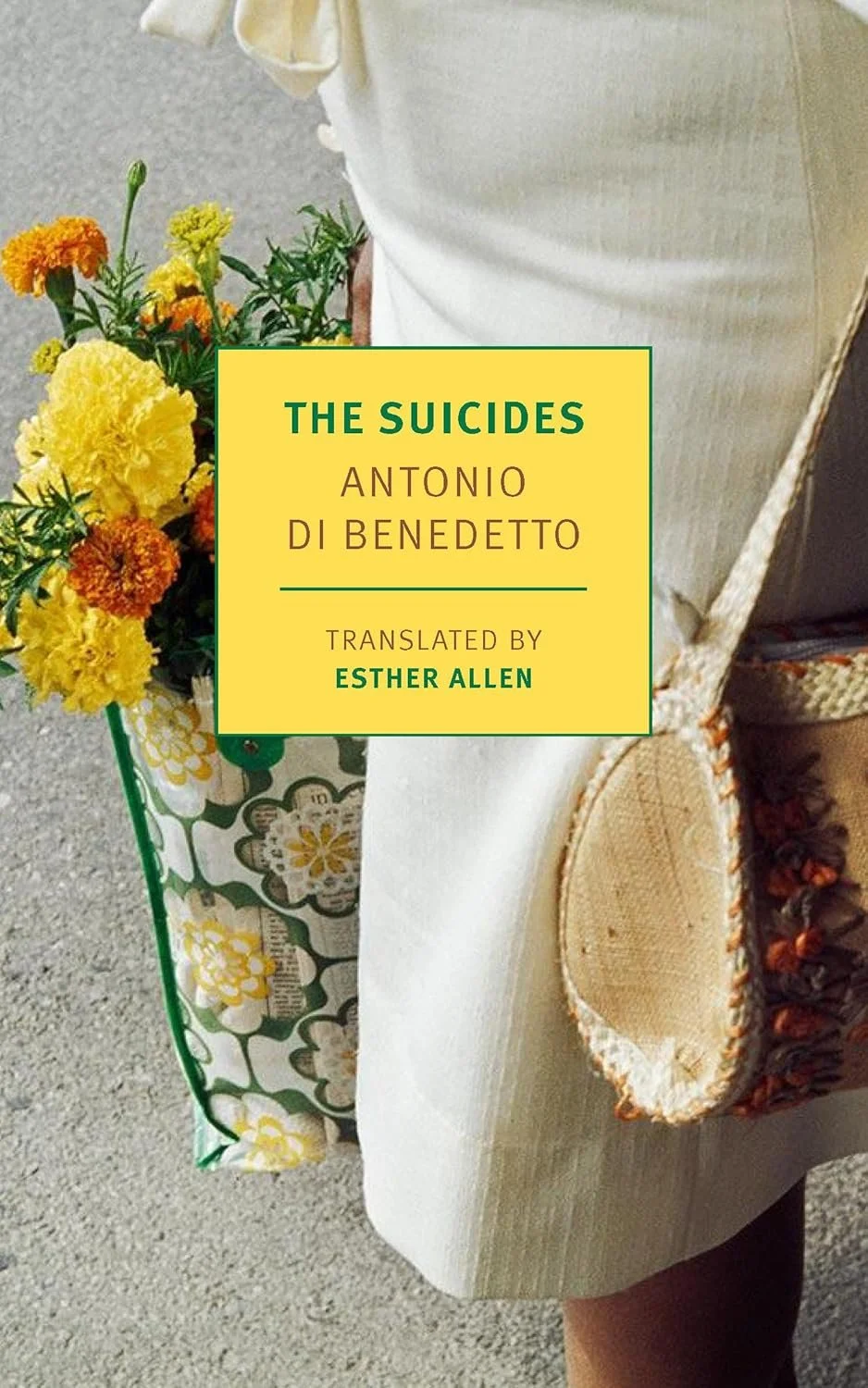The Suicides by Antonio di Benedetto
/The Suicides
by Antonio di Benedetto
translated by Esther Allen
NYRB Classics 2025
The Suicides follows Zama and The Silentiary to conclude Antonio di Benedetto’s self-appointed Trilogy of Expectation, now available in English translation from New York Review Books. Like the novels that make up Jens Bjørneboe’s History of Bestiality trilogy, their through line is a theme, rather than a shared world or chronology. There’s no carry-over as far as characters or settings are concerned, but each book cuts a similar figure, mapping the interior world of a man on the brink of, well, something.
Something is always about to happen in these books (by the third and final volume, the reader expects to expect as much). It’s a bit of a gamble as far as narrative gambits go, building tension cumulatively, not promising the payoff of a memorably unpredictable ending in exchange for the reader’s patience. The same ingredients in lesser hands have been a common cause for many frustrating reading experiences. But di Benedetto’s shrewdness in plotting, the way his sentences subtly impel and complicate inference, the manner in which he never hammers the reader (even when the reader asks for it), make for a novel that is worth its every page.
In the case of The Suicides, the title says it all, or most of it. Imagine the ironic predicament of a cancer-ridden oncologist. Di Benedetto’s narrator, who remains unnamed throughout the novel, finds himself in a similar bind. An investigative journalist for the local paper of provincial town in Argentina, he’s been tasked with reporting a string of local suicides—maybe connected, maybe not—all while struggling to answer Hamlet’s age-old question for himself: to be, or not to be? For the narrator, it’s familiar ground, in large part, because it’s familial ground. At the novel’s opening, he announces his pedigree:
My father took his life on a Friday afternoon.
He was thirty-three.
I’ll be thirty-three the last Friday of next month.
Tía Constanza mentioned the coincidence, discreetly but tactlessly. I forgot all about it. Until today, when you might say it came looking for me.
At the agency, the boss said, “This could be your chance.”
Without asking permission, he put three photos on my desk and explained my task: to figure out what he’d noticed about them.
“What do you see?”
The photos depict the novel’s first three suicides, and it’s as though the moment they land on the desk, a narrative clock starts ticking. The narrator, and no one else, is on a race against that clock, and part of what makes this speedy, staccato, 150-page tale such a thrill to read is that the significance of that race is always shifting: First, he needs to write up his report in time, telling the stories behind these deaths, or his boss might fire him. Next, he needs to make a move, romantically, with one or another of his attractive colleagues, or they’ll never indulge his desire for intimacy. Finally, he often feels the need to take his mind off things entirely, get a breather, or he might just crack. And he does—he doesn’t crack—he takes breaks: the anodyne of the movie house, as well as visits to eat his mother’s cooking, punctuate the novel.
So, too, do a growing series of notes provided by Bibi (a.k.a. “Card Catalogue”), the police agency’s resident translator, whose assistance in the investigations veers from the clinical and sociological (notes on Durkheim, national suicide rates, peculiar case studies) to the cerebral and philosophical. At one point, she drums up a list of suicide’s “rejecters”:
Pythagoras, Plato, Aristotle, Dante, Luther, Calvin, Shakespeare, Spinoza, Napoleon . . .
Albert Camus: “From the absurd, I derive three consequences: my rebellion, my freedom, my passion. Through no more than the play of consciousness, I transform what was an invitation to death into a rule for living: and I reject suicide.”
Kant: “Suicide is abominable because God forbids it. God forbids it because it is abominable.”
As the odd notes pile up, as the investigation hits one dead end after another, as additional suicides crop up, inscrutably, at the outskirts of the town, rather than slackening, the novel’s momentum only builds. It’s interesting how di Benedetto pulls this off. All the research, interviews, and assorted detective work, rather than serving to further the main storyline, gradually shift focus to lend a disturbing credence to the prophecy outlined in the novel’s first few sentences. The novel subtly structures itself around the one month that separates the narrator from the semi-innocence of being 32 and the age, 33, at which his father killed himself. It’s not until the final act, when many of the novel’s initial concerns have virtually fallen by the wayside, that the stakes seem the highest. The narrative grows increasingly introspective, as the narrator seriously questions his will to live. To accept suicide begins to feel like accepting the natural order of things. To reject it, then, is to repudiate the pattern his father set for him—the very pattern an author might set for a character. He muses on about suicide’s role in a story:
In a film or novel, if the protagonist kills himself, the story ends.
If he kills himself at the start, it’s because we’ll go backwards, and the story will be told after a leap into the past.
Though verging at times on the metafictional, Di Benedetto never loses control of his story. The Suicides may be too fragmented to fit the bill as a police procedural, its narrator too much of an everyman to muster comparison to Philip Marlowe. Simply put, it’s a novel of expectation and of understatement (Esther Allen’s translation is a marvel of readability), slyly fit to a familiar story of intrigue and mystery. It ranks among the finest of its kind.
Eric Bies is a high school English teacher based in Southern California
